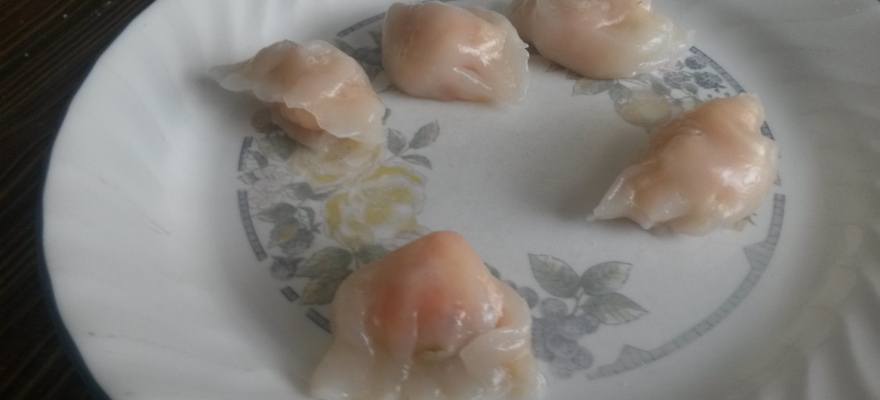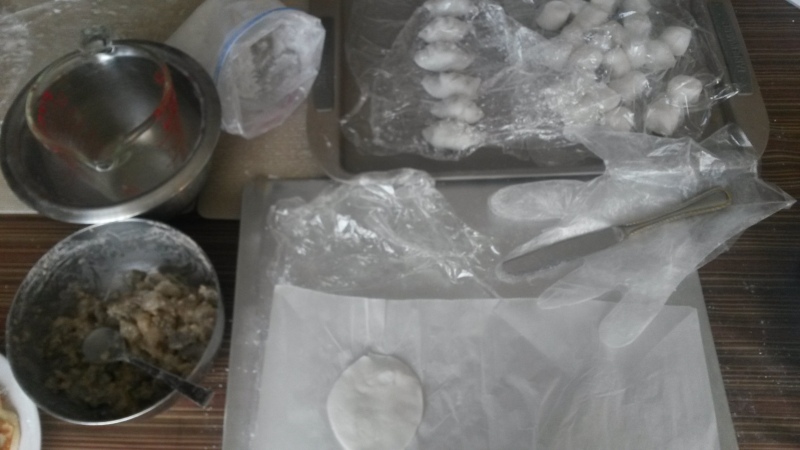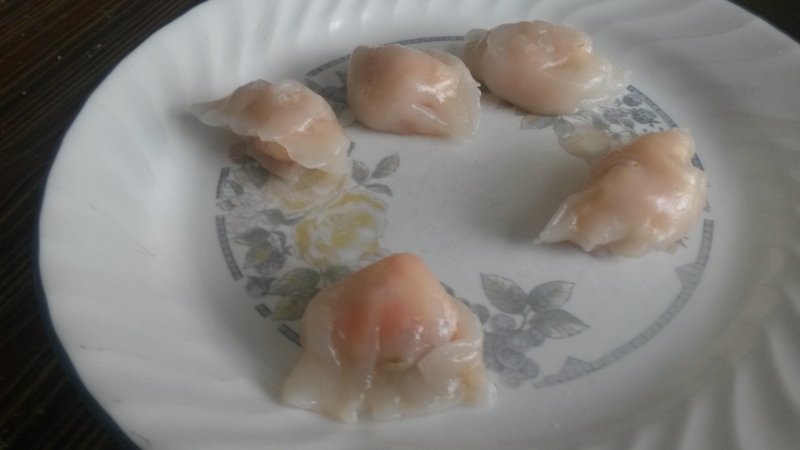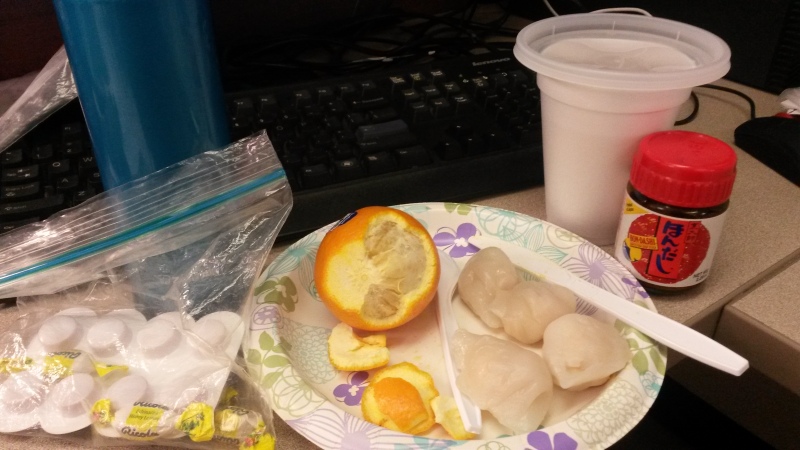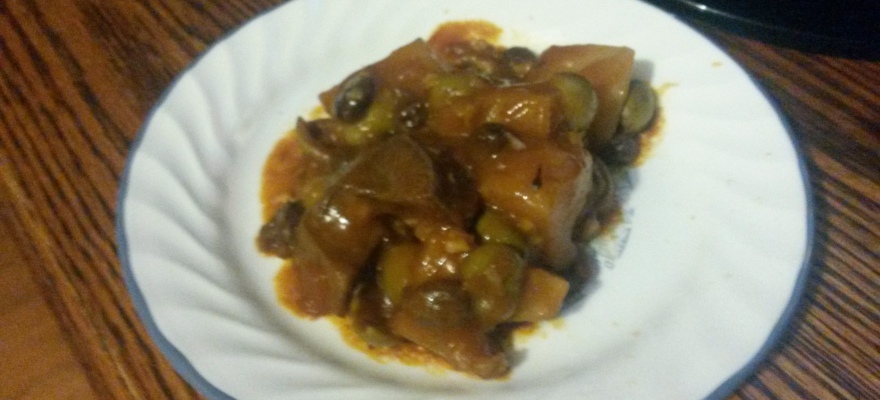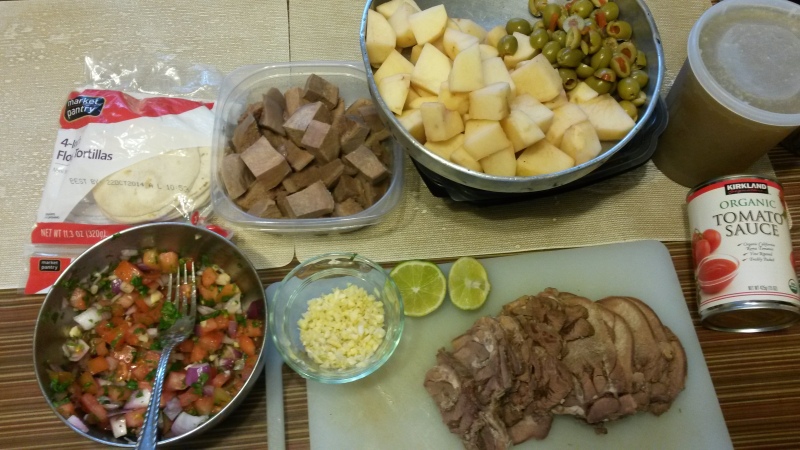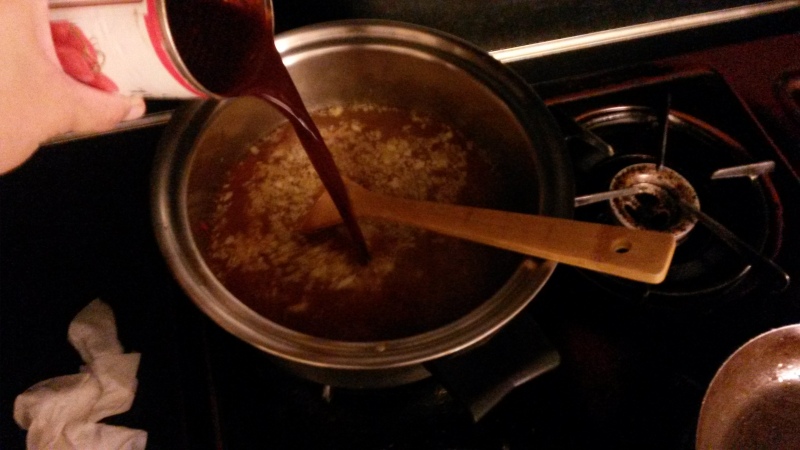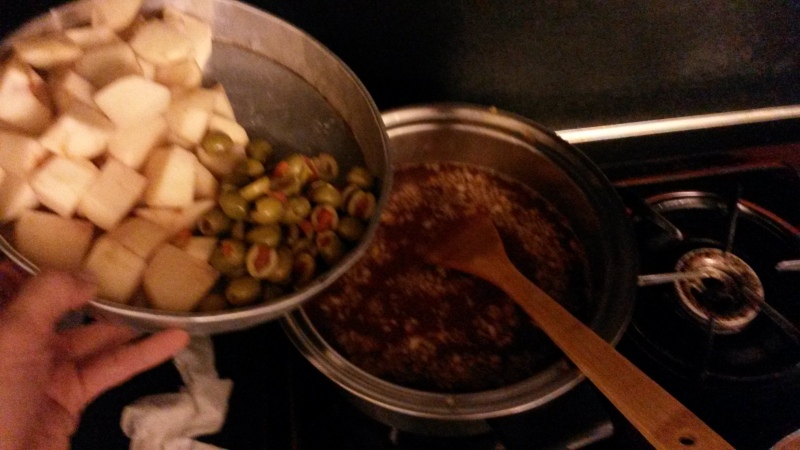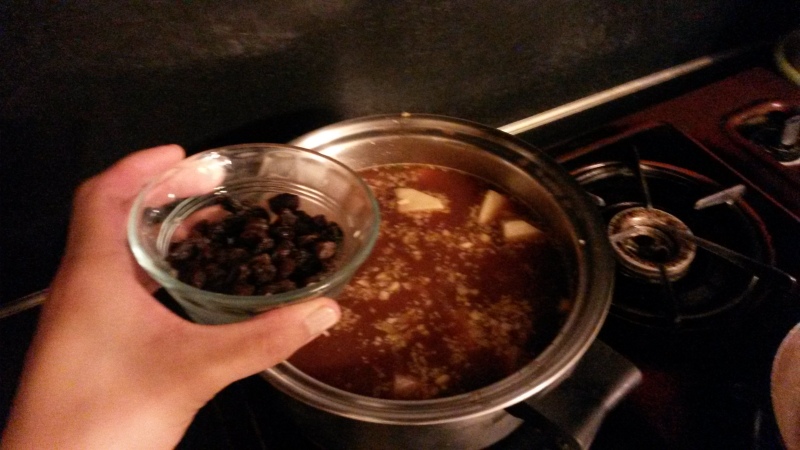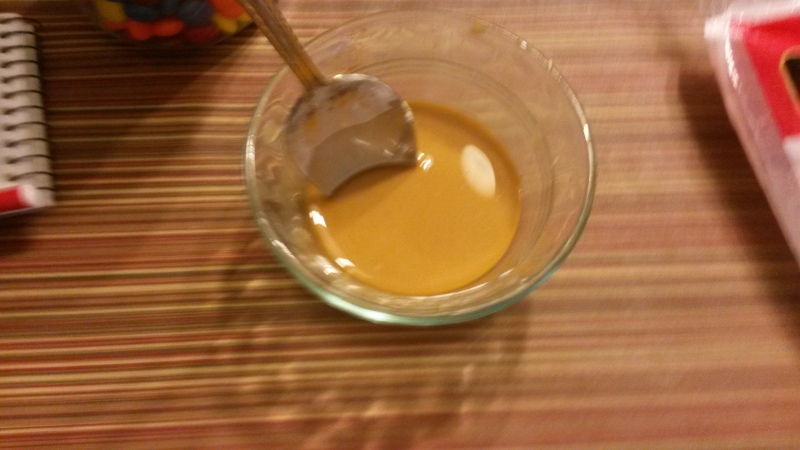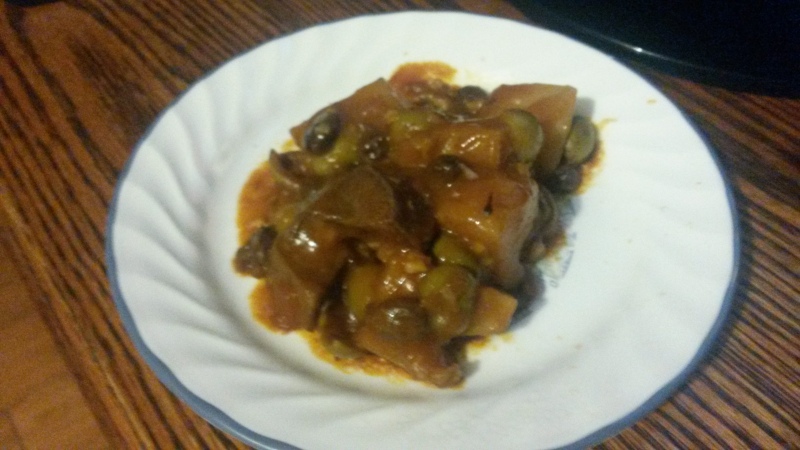What was originally a spontaneous (and surprisingly successful) attempt at ha gao, mainly to get rid of some miscellaneous items from my pantry, turned into a very important means of ingesting sustenance as I finally caught the flu. I’m probably one of the last persons at my job and definitely the last person at my house to succumb to this viral nuisance. And yes, I did get my flu shot this year…one covered strain in this year’s vaccine mutated or the station going around wasn’t included in this season’s flu shot.
Food makes the soul happy, or if anything it makes mine quite content. Soup is the go-to comfort food for illness altogether. This is a very last-minute idea as I was dragging myself to get ready for work last Sunday…but it worked wonderfully!
A few days before, I prepared ha gao (a shrimp dumpling staple at dim sum places) using wheat starch and tapioca powder that’s probably been in my pantry since a failed ha gao attempt more than a year ago. The wheat starch is crucial for the translucent dumpling skin that results after steaming. More than a year ago, the recipe I followed for the wrapper was faulty but moreso my dumpling wrapping skills were novice, at best. My dumpling wrapping skills have gotten better since I started regularly preparing homemade dumplings for work.
This time, I generally followed a recipe that I found via Pinterest: I just added more grated ginger to my shrimp filling because I like the taste of ginger.
I chose to steam all 50-something dumplings after being formed because I was afraid the wrappers would break/fall apart after the shrimp filling inside thawed out while steaming. The wrappers are quite delicate. The freezer was also packed, not like I could’ve frozen some even if I wanted to.
As mentioned in the recipe, a flat press would definitely make it easier to form the wrapper. A rolling pin got too messy for me and flattening the wrappers with a weighted flat-bottom bowl still didn’t get the wrappers to a desired thinness. I also should’ve kneaded my wrapper dough more since I thought my wrapper was still too fragile. Next time! I can see myself making ha gao or a different type of translucent wrapper dumpling some time this year, for sure.
Long story short, I agreed to come into work last Sunday because all my other co-workers were sick. I had an itchy throat earlier in the day, but I didn’t think I’d experience all these horrible symptoms associated with the flu when I woke up before work (lightheadedness, muscle pain, joint pain, fever, profuse phlegm production, painful coughing, etc)! I quickly packed some shrimp dumplings and added those to a bag already containing oranges I bought earlier, lots of tea bags, cough drops, and sinus pressure reducing medicine. I looked at my pantry to see if there was anything I could bring to snack on at work and (luckily) found hondashi powder…
Hondashi powder is like instant fish broth or instant fish soup base. Dashi is a Japanese soup base formed from soaking kelp and a dried fish product. I bought a bottle of this powder a while back and this powder has been sitting in my pantry for a long time, too. I most definitely forgot I had hondashi powder until I found it last Sunday!
Moments like this, I would prefer to eat tom yum or kimchi jjigae. The sour clear broth of tom yum would have helped my itchy throat so much. I’ve also been craving tom yum for some time. The heartiness of kimchi jjigae would’ve kept me full for a while. The spiciness would’ve been a great counter-irritant for my throat, too. Regardless, thanks to my hondashi powder I suddenly had instant soup at work!
Thank goodness there’s a water cooler that dispenses hot water (but heating up water in a microwave wouldn’t have been unreasonable, either). A number of times, I filled a Styrofoam cup with hot water and dissolved around a spoonful of powder. Afterward, I added a couple cold shrimp dumplings, allowing the heat to gently warm these up.
I’m still sick but I am getting better. I need to buy more oranges, though! Now that I know I have hondashi, I can see myself adding that to some dishes to boost a food’s umami (…well, if I don’t finish the bottle making more instant soup at work first)! I’m still only consuming oranges and soups (this soup being the main one since I made a lot of ha gao) since it still hurts to swallow. In general, I’ve tried a number of instant soups/broths before and this is one of the few that I’d recommend consuming: it’s just naturally salty and it’s not overbearing. Even after I get better (which I hope is soon), this is a broth I can see myself preparing more frequently, supplementing with fish cakes or dumplings to make a simple, tasty soup.

